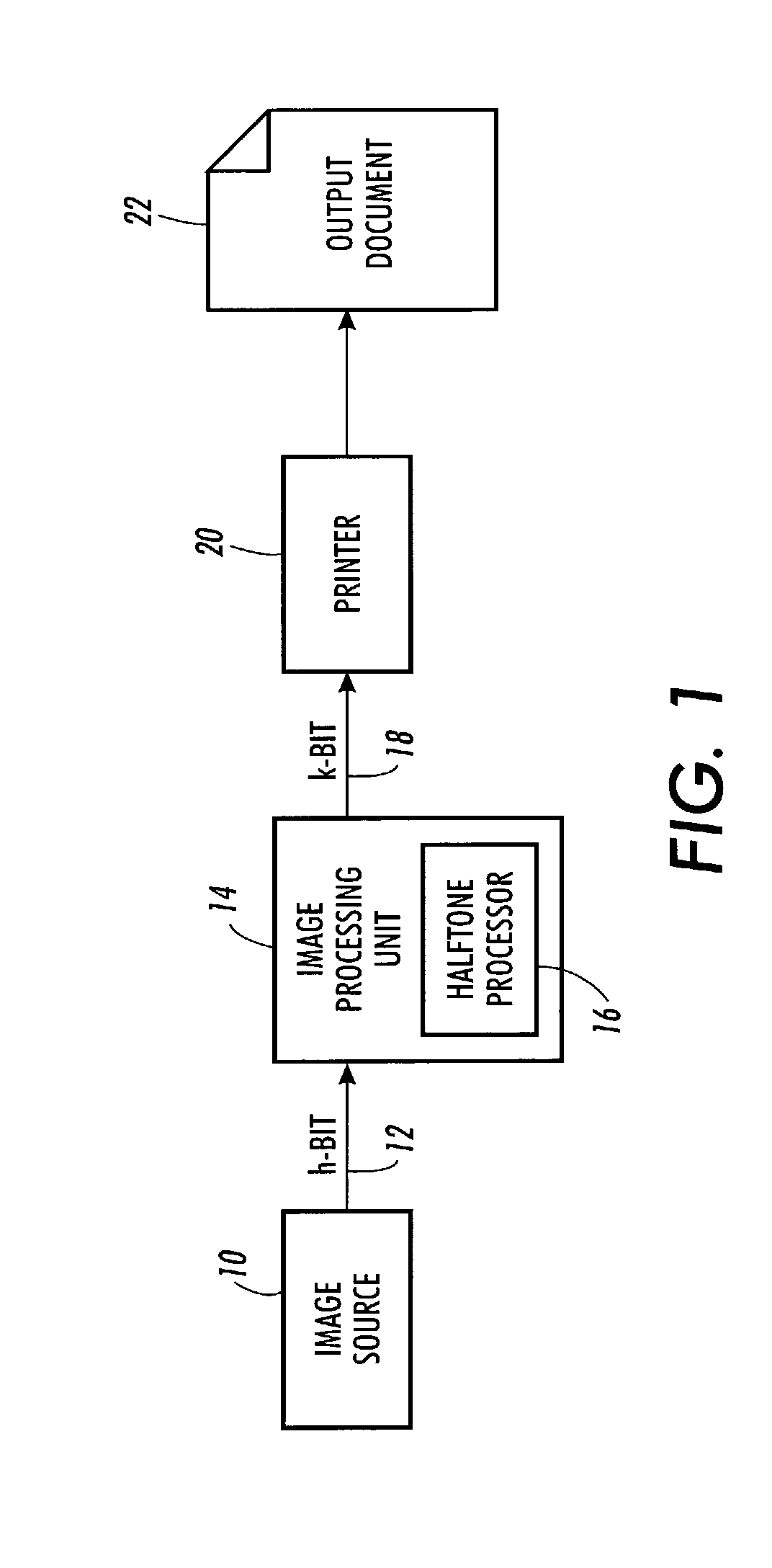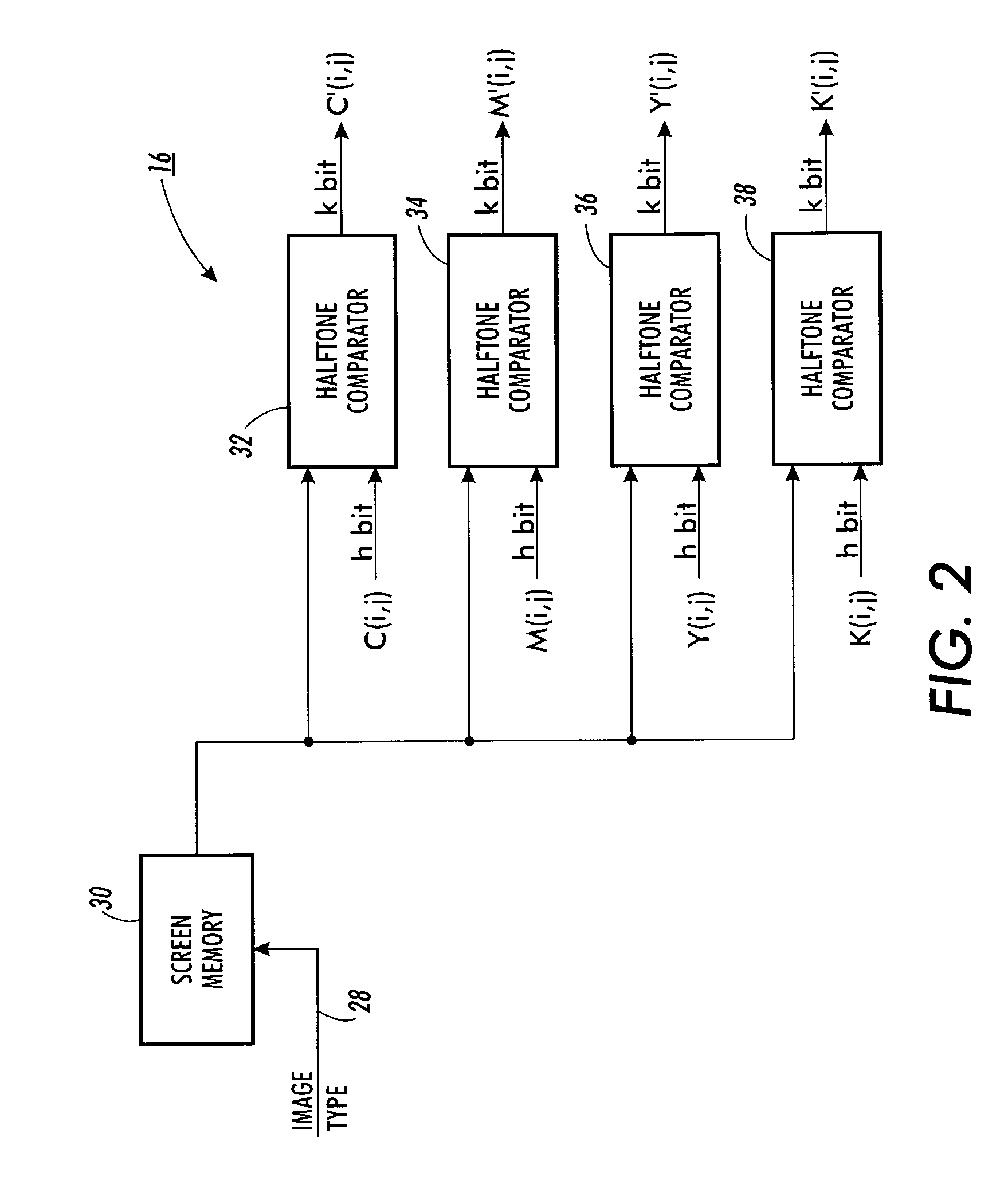Anisotropic stochastic screen
a stochastic screen and stochastic algorithm technology, applied in the field of systems and methods for printing, reproducing or displaying images, can solve the problems of unsatisfactory image artifacts, poor image quality, and images produced using such a smooth dither pattern can be filled with objectionable patterns, etc., to achieve high frequency response, good image quality, and local density prediction and controllable
- Summary
- Abstract
- Description
- Claims
- Application Information
AI Technical Summary
Benefits of technology
Problems solved by technology
Method used
Image
Examples
case 1a
[0046]Under case 1a, both output pixels are white, and white spots are minorities. Therefore, the corresponding distance between (x1, y1) and (x2, y2) is relevant to the visual appearance of the halftone images. According to the analysis above this distance is greater or equal to αg−1 / 2, or α(G / M)−1 / 2, for outputs of an idealized stochastic screen. Among all G under case 1a, the critical case of G is the smallest one, or Gc=Max(T1, T2), which requires the largest distance between the two pixels (x1, y1) and (x2, y2).
[0047]Similarly, when both dots appear as black dots, the visual appearance under the following cases must be considered:
[0048]2a. if G≦M / 2; G>T1 and G>T2
[0049]2b. elsewhere.
Among all G under 2a, the largest G is given by Gc=Min(T1, T2), which requires the largest distance α(1−Gc / M)−1 / 2 between (x1, y1) and (x2, y2).
[0050]Mathematically, one can use a merit function q(T1, T2) to evaluate the difference between the idealized stochastic screen and the chosen one. For exam...
PUM
 Login to View More
Login to View More Abstract
Description
Claims
Application Information
 Login to View More
Login to View More - R&D
- Intellectual Property
- Life Sciences
- Materials
- Tech Scout
- Unparalleled Data Quality
- Higher Quality Content
- 60% Fewer Hallucinations
Browse by: Latest US Patents, China's latest patents, Technical Efficacy Thesaurus, Application Domain, Technology Topic, Popular Technical Reports.
© 2025 PatSnap. All rights reserved.Legal|Privacy policy|Modern Slavery Act Transparency Statement|Sitemap|About US| Contact US: help@patsnap.com



